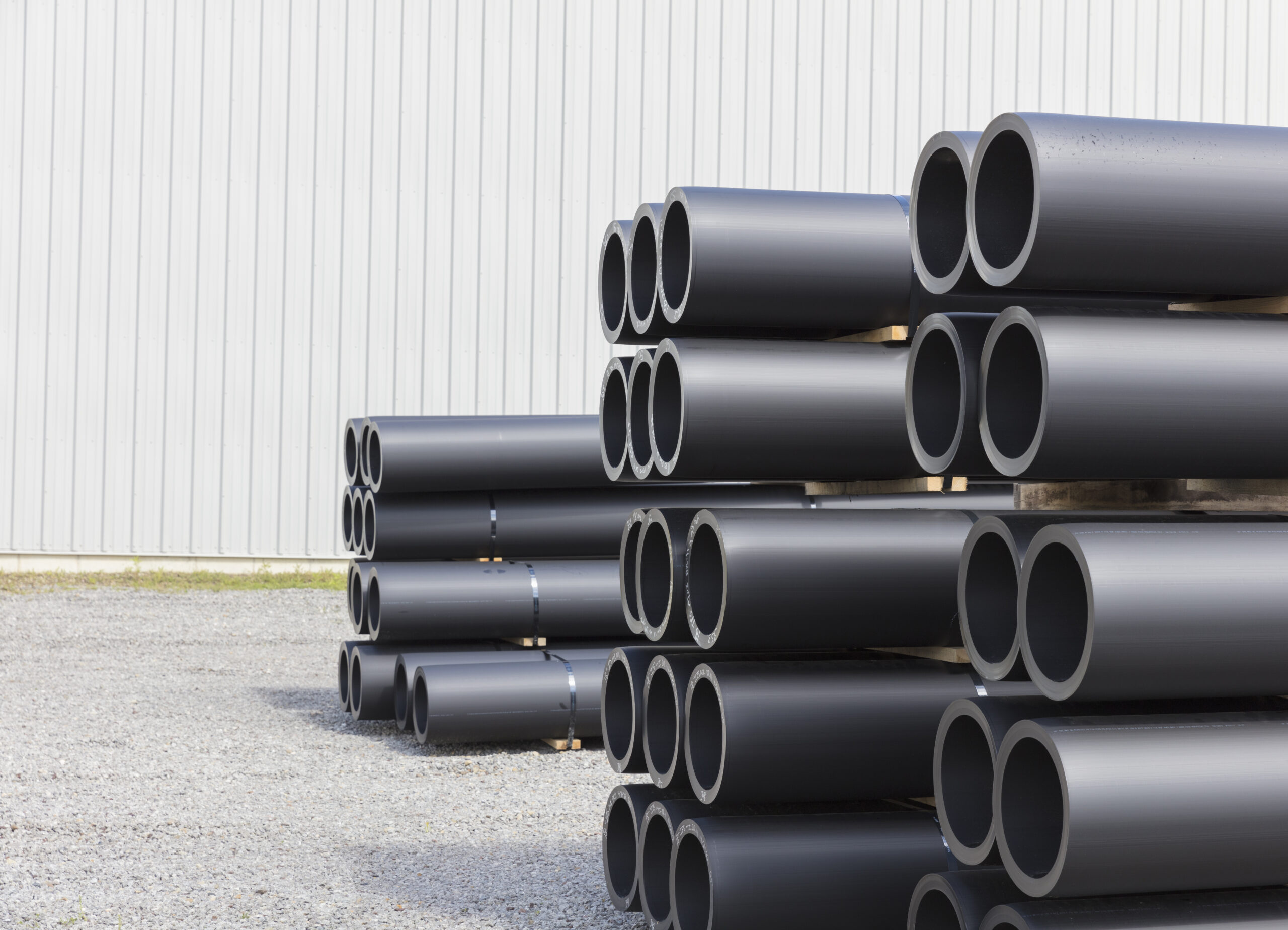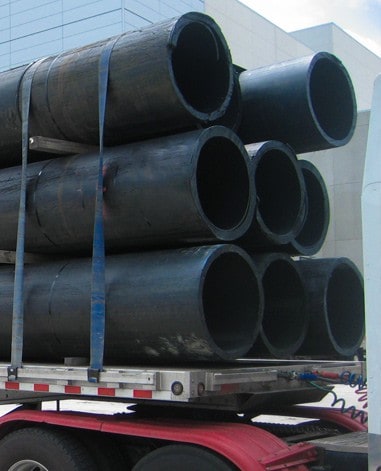How American Plastics HDPE Pipe for Oilfield Supports Energy Infrastructure
Wiki Article
The Vital Steps for Effective Setup of HDPE Pipeline in Your Next Project
Effective installation of HDPE pipeline requires careful planning and implementation. Trick actions consist of assessing project demands, preparing the site, and selecting appropriate signing up with strategies. Each stage plays an important role in guaranteeing the integrity and efficiency of the pipe. Understanding these crucial steps can considerably affect the general success of the task - Texas hdpe pipe manufacturer. However, the nuances of each action may hold the trick to conquering usual challenges encountered during installmentUnderstanding the Advantages of HDPE Pipeline
High-density polyethylene (HDPE) pipeline uses numerous benefits that make it a preferred choice for various applications. Its high resistance to deterioration and chemicals warranties longevity in demanding atmospheres, significantly prolonging the life-span of setups. Additionally, HDPE's flexibility permits much easier setup, especially in tough surfaces, as it can flex without breaking. The light-weight nature of HDPE pipeline simplifies transportation and handling, lowering labor costs during installation.Moreover, HDPE pipe is known for its low rubbing coefficient, which improves fluid circulation and decreases power consumption. Its seamless construction decreases the danger of leakages, contributing to better resource management and ecological defense. On top of that, HDPE is recyclable, lining up with sustainable methods and lowering ecological impact. In general, the mix of toughness, adaptability, and eco-friendliness makes HDPE pipeline a remarkable choice for a wide variety of jobs, from water circulation to commercial applications.
Preparation Your HDPE Pipeline Installation
When preparing a setup of HDPE pipeline, careful consideration of numerous key variables is crucial to secure an effective task. Task managers must assess the particular demands of the pipe, consisting of the planned use, circulation rates, and environmental problems. Comprehending these criteria will assist the choice of appropriate pipeline dimensions and product quality.Next, timelines need to be developed, considering procurement schedules and any kind of potential delays. Coordination with neighborhood authorities for licenses and regulatory conformity is also essential. Furthermore, a comprehensive spending plan needs to be prepared, encompassing all costs associated with products, labor, and equipment.
It is crucial to engage a certified group experienced in HDPE pipe installation. Their know-how will certainly help reduce threats, guarantee adherence to industry criteria, and inevitably contribute to the task's success. Comprehensive planning prepares for a smooth installation process and resilient efficiency of the HDPE piping system.
Preparing the Site for Installation
Appropriate site preparation is necessary for the successful setup of HDPE pipe. Prior to installment starts, the website has to be extensively analyzed to guarantee it meets all required demands. This consists of surveying the ground for existing frameworks, utilities, and potential dangers that can restrain the installment procedure.

Right elevation and alignment need to be established to preserve a constant slope for water drainage purposes. Correct drain around the setup website is likewise crucial to stop water accumulation, which can bring about complications down the line.
Techniques for Signing Up With HDPE Water Lines
Attaining a trustworthy connection in between HDPE pipelines is crucial for making certain the integrity and long life of the setup. Various techniques exist for joining these pipelines, each matched for different task demands. Blend welding is one of one of the most usual approaches, making use of warmth to bond the pipe finishes with each other, developing a smooth and durable link. This strategy can be additional classified right into socket combination and butt combination, depending upon the pipeline configurations.Mechanical fittings are another option, utilizing clamps and threaded adapters to sign up with sections of HDPE pipe. While typically faster to install, they may call for extra upkeep gradually. Electrofusion is a specialized technique that involves using electrical existing to warm and fuse the pipes through specially created fittings, ensuring a solid bond. Picking the proper signing up with technique is crucial, as it straight impacts the general efficiency and dependability of the HDPE piping system in the intended application.
Checking and Assessment of Installed Pipeline
The testing and inspection of mounted HDPE pipelines are critical to guaranteeing their capability and longevity. This process encompasses visual inspection techniques, stress screening techniques, and leakage detection treatments to determine possible concerns. By utilizing these approaches, professionals can validate the stability of the setup before it is put right into usage.Aesthetic Inspection Techniques
Utilizing efficient visual assessment strategies is essential for assuring the stability of installed HDPE pipelines. Assessors must systematically check out all visible sections of the pipe to identify any signs of damage, misalignment, or improper installment. Secret signs to analyze include joint honesty, surface irregularities, and links. Inspectors might make use of tools such as amplifying glasses or electronic cameras to boost exposure and detail. It is vital to examine for indicators of environmental tension, such as bending or too much flexing, which might jeopardize efficiency. Constant documents of findings permits for tracking changes gradually and helps overview required repair services. By adhering to well-known visual evaluation protocols, project teams can notably decrease the risk of future failures and guarantee long-term reliability of the piping system.Pressure Testing Techniques
Visual examination works as an initial procedure, yet it is not enough by itself to assure the performance of installed HDPE pipelines. Stress screening techniques are essential for guaranteeing the integrity of these systems. Usually, hydrostatic screening is used, where the pipelines are loaded with water and subjected to stress degrees over the designated operating pressure. This method helps determine weaknesses or potential leaks. Pneumatic testing can also be made use of, although it brings greater dangers because of the compressibility of air. No matter the approach selected, adhering to industry requirements and safety and security procedures is vital. After conducting stress tests, complete documents is required to validate the results and confirm that the installment satisfies all functional needs before continuing to the following stage of the task.
Drip Discovery Procedures
How can one assure that installed HDPE pipelines are devoid of leakages? Effective leakage discovery procedures are important to protect the integrity of the system. Aesthetic assessments need to be carried out, looking for indicators of water buildup or dirt disintegration around pipe joints. Following this, pressure testing can validate the system's stamina. A common approach is the hydrostatic examination, where water is presented under stress, keeping track of for drops that show potential leakages. Additionally, progressed technologies, such as acoustic sensing units or infrared thermography, can spot leakages that might not be visible. Regular surveillance and upkeep further contribute to the longevity of HDPE pipelines, ensuring they remain leak-free throughout their functional life expectancy. Appropriate documentation of these procedures is vital for conformity and future reference.Maintenance Tips for Long-Term Efficiency
To assure the durability of HDPE pipes, developing a routine assessment routine is crucial. This positive strategy permits the very early discovery of possible issues, reducing pricey website here repairs. Additionally, applying appropriate cleaning strategies will certainly help maintain peak performance and protect against build-up that can influence capability.Regular Examination Arrange
Although HDPE pipes are known for their toughness and resistance to deterioration, establishing a routine inspection timetable is crucial for ensuring their long-lasting efficiency. Routine evaluations help identify possible problems such as leakages, joint stability, and ecological influences that might affect the pipe's capability. It is advised that inspections occur a minimum of biannually, or much more often in continue reading this atmospheres with severe problems. hdpe pipe suppliers Midland TX. Throughout these analyses, aesthetic checks should be performed to discover signs of wear or damages. In addition, utilizing technology such as ultrasonic screening can give additional understandings right into the pipe's condition. By implementing a structured examination routine, job supervisors can proactively resolve problems, thereby prolonging the life expectancy of HDPE pipelines and keeping system efficiencyProper Cleansing Techniques
Proper cleansing techniques play an important duty in preserving the long-lasting efficiency of HDPE pipes. Normal cleansing avoids the accumulation of particles, debris, and biofilm, which can bring about clogs and reduced circulation efficiency. Operators needs to employ methods such as high-pressure water jetting or foam cleansing to properly eliminate impurities without damaging the pipe surface. It is crucial to prevent utilizing rough chemicals that may break down HDPE material. Furthermore, set up maintenance checks ought to include visual examinations for any type of indications of wear or damages. Correctly educated personnel ought to accomplish these cleaning procedures, making certain conformity with safety and environmental laws. By carrying out these practices, the lifespan of HDPE pipes can be greatly prolonged, guaranteeing excellent performance throughout their functional life.Regularly Asked Concerns
What Are the Ecological Influences of HDPE Pipeline Production?
The ecological effects of HDPE pipeline production include greenhouse gas exhausts, power intake throughout manufacturing, prospective plastic pollution, and challenges in recycling. HDPE's long life and resistance to corrosion can alleviate some ecological problems.Exactly How Does HDPE Pipeline Compare to Other Materials?

What Equipment Are Necessary for HDPE Pipe Installment?
Necessary tools for HDPE pipeline installation consist of a combination machine, pipeline cutters, shovels, measuring tape, and security gear. Appropriate equipment guarantees reliable, risk-free handling and installment, adding to my website the job's overall success and stability.Are There Any Certain Rules for HDPE Pipe Installation?
Certain regulations for HDPE pipeline installation vary by region, frequently regulated by neighborhood, state, or federal codes. Compliance with these guidelines warranties safety and security, environmental management, and capability, making adherence crucial for effective job end results.Can HDPE Water Lines Be Recycled After Usage?
Yes, HDPE pipelines can be reused after use. Their thermoplastic nature enables reprocessing, making them ideal for reusing into brand-new items. This sustainability element adds to ecological preservation and promotes round economic situation methods in construction.Report this wiki page